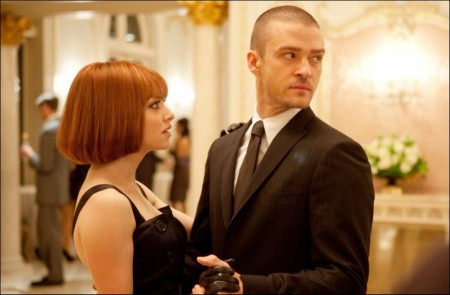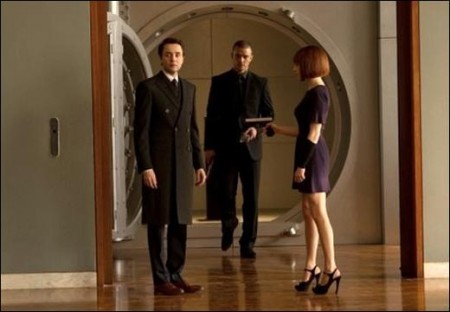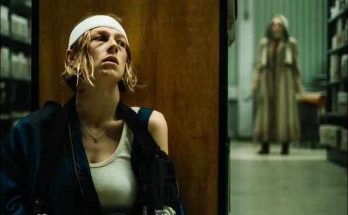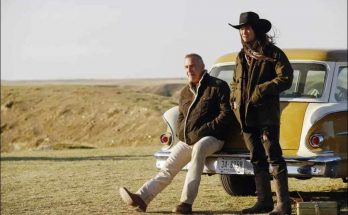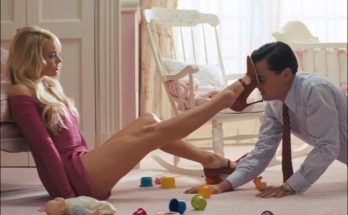“In Time” was filmed entirely in and around Los Angeles. “We felt it was really interesting to shoot in the capital of staying young forever,” says Niccol. “It seemed appropriate in a way. The world of IN TIME looks very familiar because when we conceived the film’s look, we posited that the invention of the body clock was essentially the death of all other inventions; the poor have no time to create anything new and the rich have no incentive. Why do something today, when you can do it a 100 years from now?”
While IN TIME contains familiar genre elements, it is much more of an alternate reality or parallel world, where every piece of wardrobe, every piece of set dressing, every person’s very being is informed by the clock. “Everything, including the production design and cinematography, is related to time,” Niccol continues. “We decided that there would be no graffiti in the ghetto because no one has time to waste scrawling on a wall. In Dayton, where everyone’s running, the camera was constantly moving, and when we got to the wealthy zone of New Greenwich, we would slow down the camera. We wanted to give you the feeling that time has somehow slowed down for these rich people. Similarly, the music is up-tempo in the poor zone and it would slow down for scenes in the rich zone.”
The colors of Dayton pop, while the palette of New Greenwich is muted, with the thought that bright colors would overstay their welcome after decades of being viewed. Your wrist is your wallet and bank account; in a crime-heavy society (such as Dayton), it is easily accessible. And with only hours to live, clothes need to be easily and quickly donned, via zippers or pull-ons. In New Greenwich, time is power, so the wrist is protected and clothes and accessories reflect the “time to kill” mentality. Hair and makeup are lavish.
Describing how it is to shoot the action sequences in the film, Justin Timberlake jokes, “I run, we cut, somebody yells ‘action,’ and I run again. Then we cut. Then someone yells ‘action,’ and I run some more. No, actually, it’s been a lot of fun. I would describe this film more as a thriller than an action movie, and I think it has a lot to do with Roger Deakins, who’s a legendary cinematographer. The way he captured the story was so simple, and yet it’s very exciting. But it’s not a lot of shaky camera work and fast, whipping moves. It’s beautifully composed, and I think that makes a difference; it makes it feel more real.”
Dayton and New Greenwich spring from Niccol’s vision and are brought to life by the talents of his creative team, including director of photography Roger Deakins, ASC/BSC, production designer Alex McDowell, RDI, and costume designer Colleen Atwood. Together, they turned Los Angeles locations into what producer Eric Newman calls “something we’ve never seen before. Los Angeles is a big character in the movie, but I challenge anyone to look at this film and say, ‘Oh, clearly, that’s Los Angeles.’ It’s a very different side of L.A.”
For the streets of Dayton, the filmmakers selected a several square block area in an industrial section of downtown L.A., where they were able to groom existing, and largely disused, buildings into the structures of the fast-paced metropolis. Other “Daytonian” locations included: a pawnbroker adjacent to Los Angeles International Airport; an apartment in the small incorporated city of Maywood; a downtown Mexican restaurant; a power plant in the city of Pasadena; the 7th Street bridge, with nearby riverfront; the strictly-industrial, incorporated city of Vernon; and a field in Griffith Park.
New Greenwich is an amalgam of locations in Beverly Hills, Century City and Malibu, all of which create the luxury and wealth of the richest time zone, which filmmakers described as “an empty paradise.” Other locations for this fictional sector included: the interior of a downtown movie palace and the exterior of gleaming Century City high-rises, combined to create a grand casino where Will gets his first taste of life in New Greenwich; the austere headquarters of one of L.A.’s premiere talent agencies; the streets of the business centers in Century City; and the interior of a downtown banking building. For the palatial domicile of Philippe Weis, movie magic was utilized by combining two of the largest private homes in Beverly Hills, including the beyond-high-end Fleur de Lys estate, touted as one of the most expensive properties in the U.S.
In addition to the homes and buildings afforded featured roles in IN TIME, several recognizable automobile classics (slightly modified to fit in the alternate universe) zoom across the screen, including: 1970-71 Dodge Challengers; 1967 Jaguar XKE Roadster; 1985 Cadillac Seville; 1961 Lincoln Town Car; 1964 Lehmann-Peterson Limo; 1980 Ram Charger; and a 1990 armored truck.
Throughout these sets, the action never stops – which was sometimes a challenge for the actors. “It was a bit painful,” admits Seyfried, “during scenes where Will and Sylvia were running for their lives – which was almost all the time – and I was wearing heels!”
Filming IN TIME brought the eternal debate (time versus money – which is your priority?) back among cast and crew. For Justin Timberlake, the subject matter had a spillover into his day-to-day life: “This film has definitely been the most challenging one I’ve ever done. It really stayed with me. For a couple of weeks after we wrapped, I kept looking at my forearm, expecting to see a ticking digital clock. Andrew’s world was that vivid to me.”
Amanda Seyfried confesses, “I actually said ‘money’ instead of ‘time’ when I was speaking dialogue; this happened several times. And Andrew would cut and say, ‘Um, it’s time, and not money.’”
Summing up, producer Eric Newman returns to the notion that initially drew him to the project – how IN TIME works on two levels. “You can appreciate the movie for its story, characters and action, and then you can step back and think about what it’s actually saying about the world in which we live. But you can, if you want, completely divorce yourself from any kind of macro thinking, and just enjoy the ride.”
Andrew Niccol echoes that thought: “My hope is that audiences will enjoy IN TIME on a lot of different levels. Some will see it for the big action scenes, or for the love story between Will and Sylvia. It’s a thrilling ride, but there are ideas there as well.
“Every second really does count – in the world of IN TIME and in ours.”
Related Link: Read the Full Production Notes for In Time
Visits: 112
